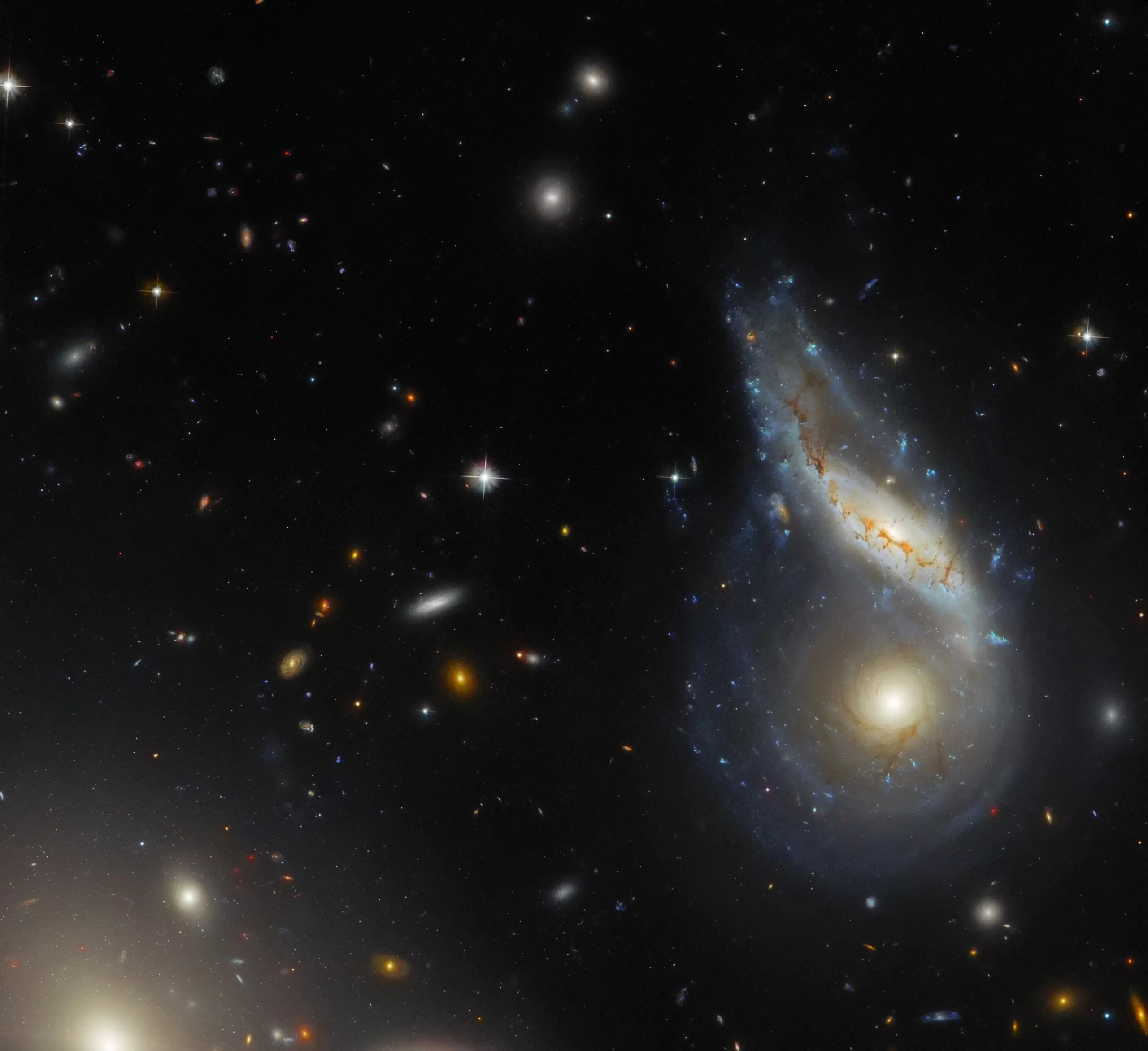The Hubble Space Telescope recently observed a significant cosmic event – a galactic merger. This phenomenon involves two galaxies colliding and merging into a single one, altering their appearance and triggering intense star formation.
Galactic Merger Defined
A galactic merger occurs when two galaxies come close to each other and eventually combine. This process results in a transformative cosmic event, changing the structure and content of the galaxies involved. These are important but slow events, taking many earth years to complete.
Hubble’s Observation
The Hubble Telescope captured clear and detailed images of the merging galaxies. These images provide valuable insights into the dynamics of the collision and its aftermath.
The two galaxies are NGC 6040 (the tilted, warped spiral galaxy) and LEDA 59642 (the round, face-on spiral).
Scientific Significance
Galactic mergers play a crucial role in the evolution of galaxies. The mixing of stars, gas, and dust during these collisions sparks intense star formation, influencing the overall characteristics of the merged galaxy. Scientists study such events to better understand the processes shaping our universe.
Distance and Time
The observed merger took place in a distant part of the universe. The light from this event traveled for millions of years before reaching the Hubble Telescope. This event is happening 570 million light-years from Earth.
Image Credits: @NASAHubble

